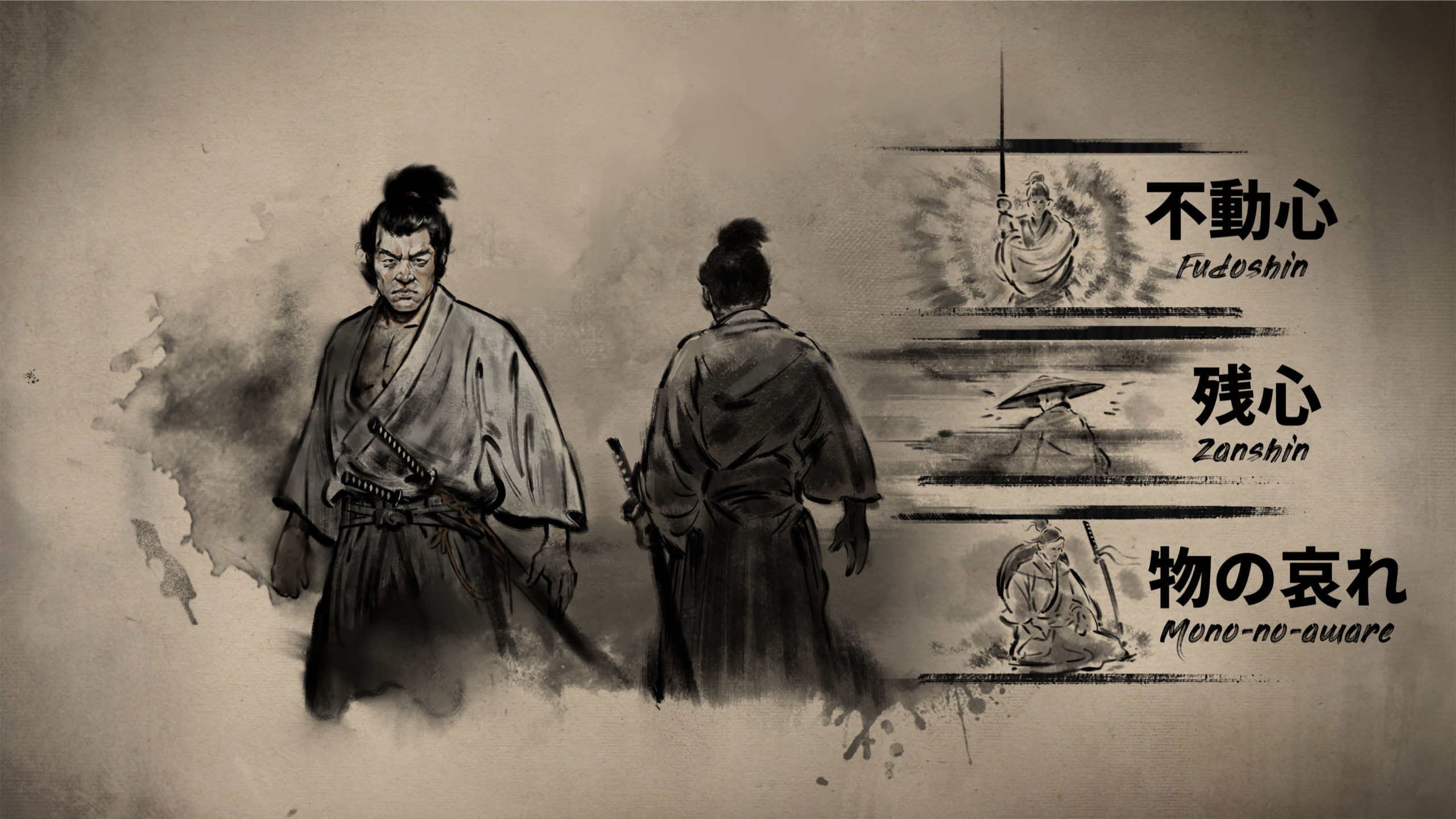
Role-playing is a fundamental aspect of Tale of Ronin. Each ronin you play as possesses unique characteristics, including specific skills. The game features a total of 15 skills divided into five distinct categories. Some give an advantage in combat, while others offer passive features to aid survival in the challenging world. Certain skills are utilized in active skill checks during in-game dialogues, while others enable the ronin to contemplate their circumstances in the world through passive skill checks.
Here’s an in-depth explanation of how three of those skills work:
Skill 1: Fudoshin
Fudoshin (不動心) is a Japanese term that originates from Zen Buddhism and martial arts philosophy. It can be translated as “immovable mind” or “unshakable spirit”. Fudoshin represents a state of mental and emotional composure where an individual remains calm, centered, and focused, even in the face of challenges or adversity.
This skill has a strong effect on combat. It is always important for the ronin to have an empty mind when confronting an opponent. Higher Fudoshin values will help maintain composure during the fight.
Skill 2: Zanshin
Zanshin (残心) is a Japanese term often used in martial arts, originating from Zen Buddhism. It can be translated as “remaining mind” or “lingering spirit”. Zanshin represents a state of awareness, focus, and preparedness. This state persists even after an action or technique has been executed.
This skill allows the ronin to stay aware during various encounters. The player may notice subtle signs of danger and will not be taken off-guard by sudden events. Zanshin is also the skill that enables the ronin to regain lost balance and composure during combat.
Skill 3: Mono-no-aware
Mono-no-aware (物の哀れ) is a Japanese term that represents a deep, empathetic appreciation of the fleeting, transient nature of life and the beauty found in its impermanence. The phrase can be loosely translated as “the pathos of things” or “the poignancy of impermanence”. It is a key concept in Japanese aesthetics, particularly in the context of art, literature, and culture.
Mono-no-aware is often associated with the appreciation of the ephemeral beauty found in natural phenomena. This includes the blooming and falling of cherry blossoms, the changing of seasons, and the fading of a sunset. The concept encourages an understanding that life’s beauty is enhanced by its impermanence. And that a deeper appreciation of existence can be gained by acknowledging its transient nature.
Wandering ronin are acutely aware that death is always near. Their heightened perception allows them to experience a bittersweet mix of joy and melancholy as they traverse beautiful landscapes. The mono-no-aware skill helps ronin better understand the situation they’ve ended up in. The player can observe changes to the internal state of each ronin through their thoughts and which options are available to them.
These unique skills may be unfamiliar to the traditional gamer at first. However, our objective in designing Tale of Ronin is to extensively incorporate the rich and distinctive Edo period culture. This game will provide an immersive and authentic historical experience for the player.